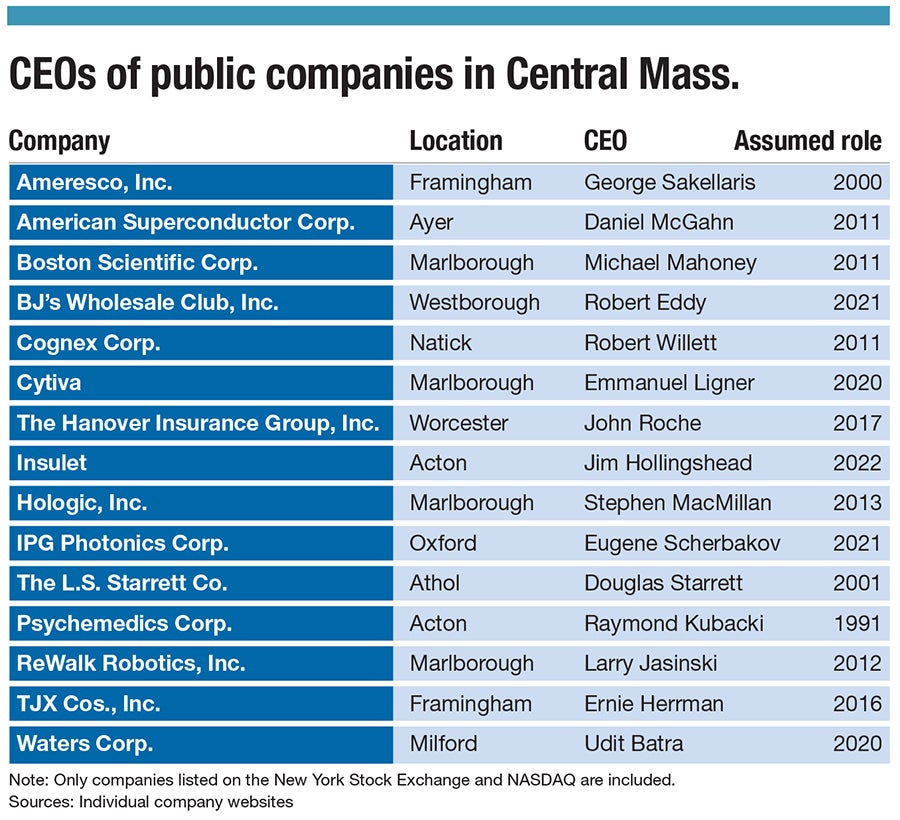The landscape for women’s business leadership at the highest level in Central Mass. has taken a hit, but for women professionals in the region, it is yet another motivator to empower one another in traditional and non-traditional ways.
Get Instant Access to This Article
Subscribe to Worcester Business Journal and get immediate access to all of our subscriber-only content and much more.
- Critical Central Massachusetts business news updated daily.
- Immediate access to all subscriber-only content on our website.
- Bi-weekly print or digital editions of our award-winning publication.
- Special bonus issues like the WBJ Book of Lists.
- Exclusive ticket prize draws for our in-person events.
Click here to purchase a paywall bypass link for this article.
The landscape for women’s business leadership at the highest level in Central Massachusetts took a hit this past spring when Shacey Petrovic resigned as president and CEO of Acton medical-device company Insulet and left the region without a single female CEO at any of its publicly traded companies listed on the NASDAQ or New York Stock Exchange.
For women pursuing leadership roles in the region, this climate for women at the top level is not shocking, but instead it is yet another motivator to seek out ways to empower one another in traditional and non-traditional ways.
Recognizing the sample of public companies in Central Massachusetts does not paint the whole picture, but rather offers a snapshot of the environment, working women are not hopeless about leadership prospects. Rather, they are seeking out ways to circumvent traditional leadership roles for entrepreneurial pursuits and doubling down on initiatives to move themselves and female colleagues beyond middle management to the C-suite.

For Central Massachusetts to be in line with the national averages, only one or two women would need to be in the role at one of the 15 companies, said Jean Beaupre, dean of the School of Business at Nichols College in Dudley.

Still, beyond reaching that threshold, it’s important for companies to realize how they might benefit from women in leadership roles.
“Gender inequity isn't just a societal issue,” said Beaupre. “It actually is smart business to have equity in your business.”
Creating opportunities
Tackling the women’s leadership issue is a two-fold approach, said Lisa Prior, president of the Boston Club, a professional women’s organization and community joining female executives together in pursuit of additional leadership opportunities.
On the one hand, said Prior, there’s a marked move for women to begin their own companies, a metric where the 46-year-old organization has seen an increase.
For young professional women in Worcester, this is a cause for hope, said Katherine Aguilar, community outreach and inclusion director at the networking group Worcester Young Professional Women’s Association.
“Instead of going out to climb a ladder, we’re creating our own tables," said Aguilar, who is the CEO of her company, Kommon Sense Co., a plastic-free gift shop in Worcester she started at age 25.
Prior, who became president at the Boston Club in July, has operated her own firm, Prior Consulting in Newtonville, since 2000. Business ownership comes with other difficulties for women.

“Many more women are starting businesses,” said Prior, “but with that comes the issue that women have less access to capital and equity.”
The benefits of female CEOs
For Prior, the increase of female entrepreneurship is only half of the solution. She does not want to ignore the fact additional resources need to be made available for women who do want the traditional C-Suite level leadership opportunities.
Beaupre, who is a professor of marketing and communications at Nichols, stressed the inclusion of women at the top of company mastheads is good for the organizations.
“There's a lot of research on what happens when women are involved in leadership,” she said. “We see that companies are more profitable.”
Companies in the top quartile for gender diversity on executive teams are 25% more likely to have above-average profitability than those in the bottom quartile for gender diversity, according to a 2019 study by consulting firm McKinsey & Co., where it analyzed more than 1,000 large companies in 15 countries.
Despite the business advantages, the progress toward executive gender diversity has been slow, McKinsey’s study found. In the U.S. and the United Kingdom, female representation on executive teams rose from 15% in 2014 to 20% in 2020.
Opening pathways for women to access traditional leadership roles is still essential to progress in closing the gap between male and female executives, said Prior. Seeing representation at the highest levels, especially for women of color and women in the LGBTQ community, is necessary to empower the next group of leaders, said Prior.
“It sends a message about who belongs there and who doesn’t,” said Prior. “It can shape a person’s aspirations.”
For companies themselves, lacking diverse women in top leadership means missing perspectives, said Prior. The company is not making those perspectives a priority, which is why intentionality is still required at this moment.
“Leadership is a skill that needs to be taught,” said Catrina Gardner, vice president of the Worcester YPWA. “To do it successfully, it's something you should invest time into.”

In Gardner’s perspective, women have innate qualities making them good leaders: listening skills, empathy, and understanding. With investment and training, this can be leveraged to make women especially effective in high level roles.
Recovering from the Shecession
The coronavirus pandemic has created problems for women’s careers, which could have negative results downstream. Burdens created by the pandemic, such as child care, disproportionately impacted women professionals and specifically women of color, said Prior.
“It has pushed women’s leadership and advancement opportunities back,” said Prior.
Women have been leaving the workforce at higher rates over the past three years of the pandemic, said Beaupre. Looking just at 2020, the first year of the pandemic, 57% of women participated in the workforce, the lowest number since 1988, according to the National Women’s Law Center. This phenomenon became known as the Shecession.
It’s a cause for concern and a step back, and something organizations should be focused on mitigating through their policies, she said.
Some shifts in working life hastened along by the pandemic have not been harmful, said Aguilar of the YPWA.

“With social media and this new digital era, as a Millennial woman, it's a bit easier to find your tribe,” said Aguilar. “It can be easier to go out and find those connections.”
Those connections are what is essential for women to make it to the top of individual industries, said Gillian Murphy, membership director for the YPWA.
“It’s creating pathways and connections that's going to give that opportunity," said Murphy. “It’s what makes it possible for people to find that path into the upper echelon of the industry they are trying to see the top of.”
For Beaupre, looking at the gender breakdown of boards of directors is a way to guess about the future of leadership from company to company. Regionally, the makeup of the boards mirrors the national average, said Beaupre, with roughly 30% of seats occupied by women. This is possible cause for hope for the future.
“That's where the next leaders are decided upon,” said Beaupre.

